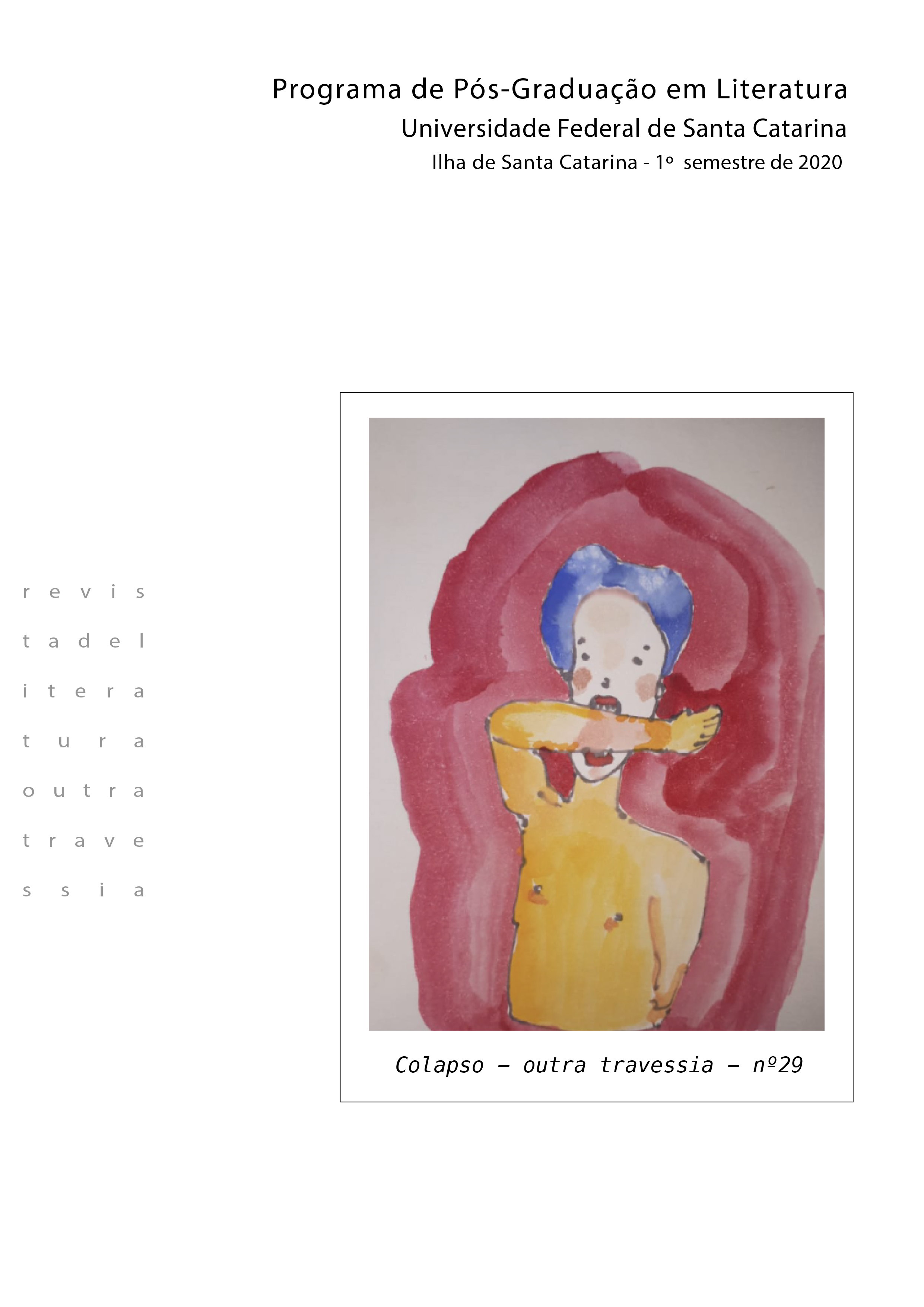This labyrinth, our amulet: considerations about Julio Cortázar and Roberto Bolaño
DOI:
https://doi.org/10.5007/2176-8552.2020.e72581Abstract
The concept of labyrinth is important to Julio Cortázar's literature, especially in works like Rayuela and in tales like those gathered in Bestiario. As his reader, Roberto Bolaño for the time being seems to manifest in works like Amuleto the resignification of this labyrinthine capacity, taking literature to other levels, in which the notions of construction and destruction of the narrative can be associated with both the fatality of an abyss and the performance that involves the point of view of the narrator. This article aims to analyze how these movements occur in both authors and to what extent approximations and distances are possible within this larger labyrinth in which they both live together, Latin American literature.
References
ARRIGUCCI Jr., Davi. O Escorpião Encalacrado. A poética da destruição em Julio Cortázar. São Paulo: Companhia das Letras, 1995.
BOLAÑO, Roberto. Amuleto. Barcelona: Vintage Español, 2017.
BOLAÑO, Roberto. Los Detectives Salvages. Barcelona: Anagrama, 2006.
CONCHA, Jaime. “Geometrias de Bolaño. Observações sobre Amuleto”. In: Leer a contraluz. Estudios de la narrativa chilena. De Blest Gana a Varas y Bolaño. Santiago de Chile: Ediciones Universidad Alberto Hurtado, 2012.
CORTÁZAR, Julio. Bestiario. Editora Nova Fronteira, 1986.
CORTÁZAR, Julio. “Para uma poética”. In: CORTÁZAR, Julio. Valise de Cronópio. São Paulo: Perspectiva, 1993.
CORTÁZAR, Julio. Rayuela. Buenos Aires: Editorial Sudamericana, 1995.
DELEUZE, Gilles; GUATTARI, Félix. O anti-Édipo: capitalismo e esquizofrenia. São Paulo: Editora 34, 2010.
DERRIDA, Jacques. “Uma certa possibilidade impossível de dizer o acontecimento/Une certaine possibilité impossible de dire l’événement.” Trad. EYBEN, P. In: Revista Cerrados, 2012. Disponível em: http://periodicos.unb.br/ojs248/index.php/cerrados/article/view/8242/6240. Acesso em: 10 mar. 2020.
ECO, Umberto. “Prólogo”. In: SANTARCANGELI, P. In: El libro de los laberintos: historia de un mito y de un símbolo. Madrid: Siruela, 1997.
FREUD, Sigmund. “O ‘estranho’”. In: FREUD, Sigmund. História de uma neurose infantil e outros trabalhos. Rio de Janeiro: Imago, 1972.
GAGNEBIN, Jeanne Marie. História e narração em Walter Benjamin. São Paulo: Perspectiva, 1994.
LÓPEZ BADANO, Cecilia. “Construcciones estéticas intertextuales: ecos postmodernos de Cortázar en tres ‘generaciones’ literarias latinoamericanas (Bolaño, Bellatín, Busqued). (Universidad Autónoma de Querétaro)”. Rev. Chasqui, noviembre de 2014.
NIETZSCHE, Friedrich. The will to power. Tradução de Walter Kaufmann e R. Hollingdale. Nova York: Vintage Books, 1968.
TODOROV, Tzvetan. Introdução à literatura fantástica. Tradução de Maria Clara Correa Castello. São Paulo: Perspectiva, 1975.
VIÑAS, David. De Sarmiento a Cortázar. Buenos Aires: Ediciones Siglo Veinte, 1972.
YURKIEVICH, Saúl. Julio Cortázar: mundos y modos. Buenos Aires: Edhasa, 2004.
Downloads
Published
Issue
Section
License
Os artigos e demais trabalhos publicados na outra travessia passam a ser propriedade da revista. Uma nova publicação do mesmo texto, de iniciativa de seu autor ou de terceiros, fica sujeita à expressa menção da precedência de sua publicação neste periódico, citando-se a edição e data dessa publicação.
Esta obra foi licenciada com uma Licença Creative Commons Atribuição-NãoComercial 4.0 Internacional.



